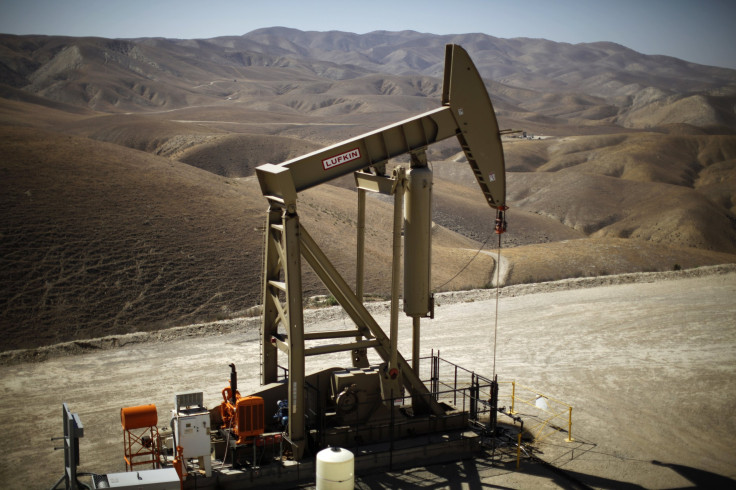Crude Oil Prices Slip To 27-Month Low On Weak Global Demand And A Surge Of US Shale Production

Crude oil prices slipped to a 27-month low Thursday, spurred by sudden price cuts from Saudi Arabia, the top oil producer. The dip follows months of declining prices caused by weaker-than-expected growth in China and Europe and a surge in U.S. supplies, according to energy analysts.
Brent crude, the main international benchmark, was down 2 percent and trading around $92 a barrel on Thursday morning. West Texas Intermediate, the American index, was around $88.60 a barrel -- dropping below $90 for the first time since April 2013, the New York Times reported.
State-owned Saudi Aramco had announced Wednesday that it was slashing prices for Asian and U.S. buyers to expand its market share. Observers expected Saudi Arabia and other members of the Organization of Petroleum Exporting Countries (OPEC) would instead reduce their output, which would help shore up global crude prices. The move has market watchers nervous that Saudi Arabia could cut its competitors out of the market, Michael Loewen, a commodities analyst at TD Securities in Toronto, said in an interview.
The Saudi news is just one of several recent developments that explain the lower crude prices, Loewen said. Earlier this week, a slew of reports showed disappointing growth in the U.S. and Chinese manufacturing sectors, a trend that could curb demand for shipments of crude oil. A Consumer Board index found that American consumers are less confident in the economy than they were in recent months, which could slow down spending and overall growth.
“A lot of people were banking on the big recovery in the U.S. economy this quarter and next” to lift crude prices, Loewen said. “The numbers are so far not going in that direction.”
That could exacerbate the effects of falling demand from Europe, which is grappling with economic stagnation and deflation, and from China, where gross domestic product forecasts have steadily declined.
In September, the International Energy Agency (IEA) slashed its forecasts for global oil demand growth for the third month in a row, calling the slowdown “nothing short of remarkable.” The Paris-based watchdog now expects oil demand to grow by 900,000 barrels per day (bpd) for all of 2014 -- the slowest rate since 2011, according to its latest report. For 2015, it reduced its estimates slightly to 1.2 million bpd.
At the same time, the world is producing more oil than it needs, further depressing oil prices.
Much of the global crude glut is driven by the U.S. shale drilling boom. American production reached around 8.5 million bpd in August -- a nearly three-decade high, the IEA reported this week.
The dramatic increase is weighing down domestic prices, but it’s also affecting the international market. The U.S. is importing less crude from other nations now, with imports likely to account for just one-fourth of U.S. petroleum consumption this year, down from 45 percent in 2011, the U.S. Energy Information Administration said.
On top of that, Canada is importing more U.S. oil, meaning that tankers carrying North and West African crude are now struggling to find buyers. That’s forced some companies to sell oil at a discount to Asian refineries, the Wall Street Journal reported this week.
More crude is also coming out of Libya after the government reclaimed two oil export terminals from rebel groups in early July. Since then, Libyan oil production has shot up from 200,000 bpd to 900,000 bpd in the span of just six weeks, Loewen said.
In Iraq, Russia and other conflict-torn countries, oil production has held steady, despite initial speculation about possible supply disruptions.
Cheaper crude oil isn’t likely to batter the economies of Russia and most of the Middle East, Andrew Kenningham, a senior global economist at Capital Economics, said in a recent report cited by Bloomberg News. However, emerging economies such as Brazil, Mexico and Venezuela could be hit harder “primarily because they have not been saving much of their oil windfalls,” he said.
Loewen said that if prices continue to dip, some smaller U.S. drillers could be forced to postpone exploration and production. “Right now, you’re getting to that point where it’s not as economically feasible to keep drilling in certain basins,” he said.
Globally, prices could rise if the U.S., Chinese or European economies picked up and regained their thirst for petroleum production. Renewed strife in Libya or an escalation of violence in Iraq would eat into the supply glut. Still, for oil prices to fully rebound, “you need a supply response from OPEC,” Loewen said. He added that the production cut of 500,000 bpd that Venezuela and other members are proposing likely won’t be steep enough to close the supply-demand imbalance. “That’s not going to cut it; you’d need quite a bit more,” he said.
© Copyright IBTimes 2024. All rights reserved.




















